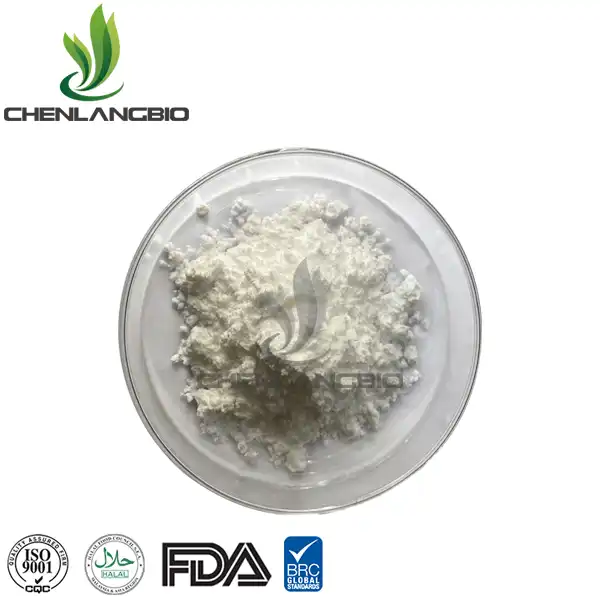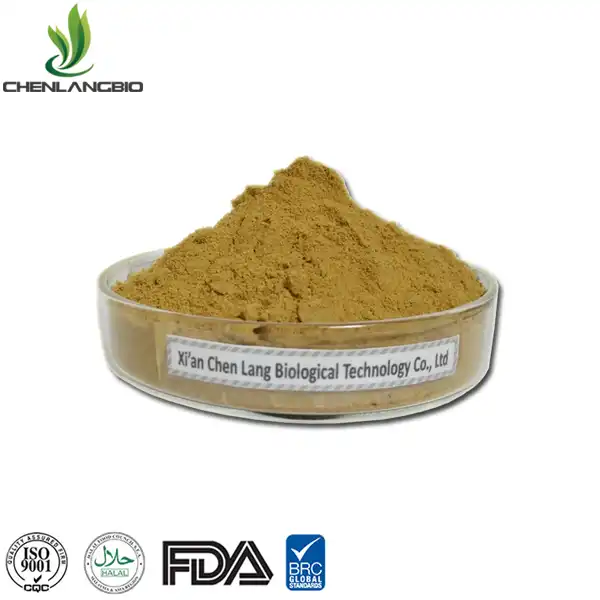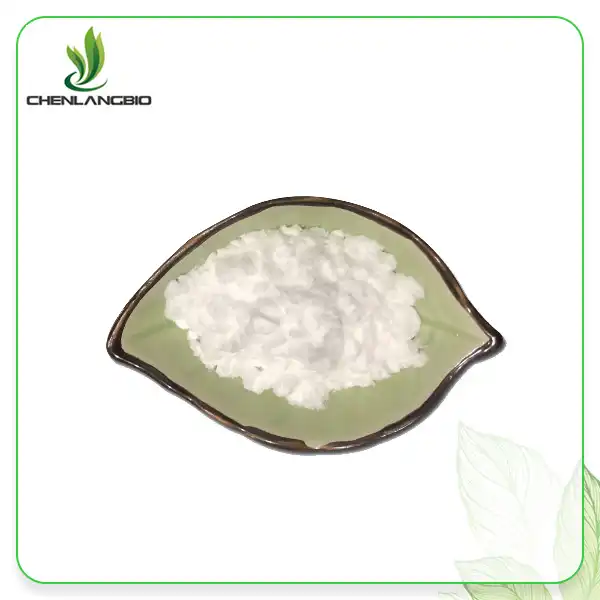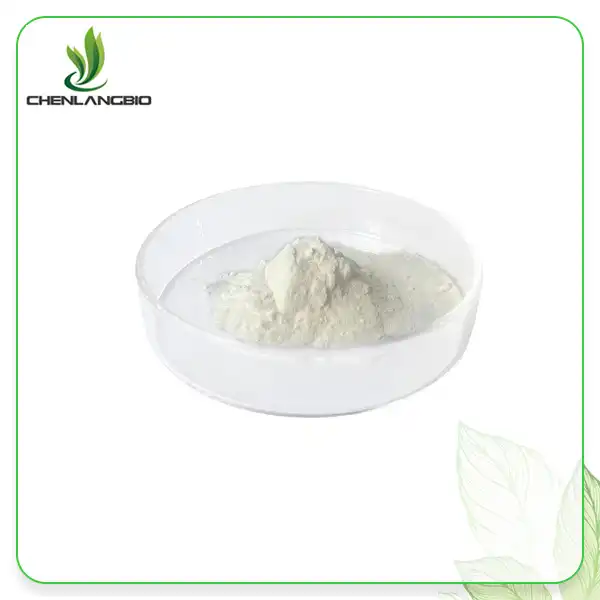How Can I Use Mung Bean Peptide Powder in My Diet?
2025-03-17 13:40:38
Mung bean peptide powder is super popular right now because it’s a healthy boost for our meals! Made from mung beans, it’s full of protein, which helps us stay strong. You can easily mix it into your food to help your muscles recover or just make your meals more nutritious. In this fun guide, we’ll share cool ways to use mung bean powder every day. You can blend it into smoothies for a tasty drink, add it to cookies or muffins, or sprinkle it on soups and stir-fries. There are so many yummy options! Let’s explore how to make eating healthy fun and delicious!
Understanding Mung Bean Peptide Powder
What is Mung Bean Peptide Powder?
Mung bean peptide powder is a cool protein made from tiny green beans called mung beans, which people have been growing for a long time. To make this powder, the proteins in mung beans are broken down into smaller pieces using a process called enzymatic hydrolysis. These smaller pieces, called peptides, are easier for our bodies to use, making mung bean peptide powder a fantastic source of amino acids!
Nutritional Profile of Mung Bean Peptide Powder
Mung bean peptide powder is super healthy! It’s full of important amino acids, like lysine, which our bodies need but don’t always get from plants. It also has lots of good stuff like iron, zinc, and B vitamins. The coolest part? It has very little fat and carbs, so you can sprinkle it on your meals without worrying about extra calories!

Benefits of Mung Bean Peptide Powder
Eating mung bean peptide powder is super good for you! It’s packed with protein, which helps our muscles grow strong and heal. That’s why athletes and active kids really like it! This powder also has antioxidants that keep us healthy. Some studies even suggest it might help with inflammation and blood sugar, but we still need to learn more. So, adding this fun powder to your smoothies, pancakes, or snacks can help you feel strong, full of energy, and ready to play! Plus, it’s an easy way to make your food even better!
Integrating Mung Bean Peptide Powder into Your Diet
Smoothies and Shakes
A fun and easy way to use mung bean peptide powder is by adding it to smoothies and shakes! This powder has a mild taste, so it mixes perfectly with fruits, veggies, and other tasty ingredients. You can try blending a scoop of mung bean peptide powder with frozen berries, a banana, some spinach, and your favorite plant-based milk for a yummy breakfast or a drink after playing sports. If you want a tropical treat, mix the powder with mango, pineapple, coconut water, and a little lime juice for a refreshing twist!
Baked Goods and Desserts
Mung bean peptide powder is also great for baking! You can add it to muffins, pancakes, or protein bars to make them even healthier. Just swap out a bit of the flour in your recipes for mung bean peptide powder. It works really well in banana bread, oatmeal cookies, or homemade energy balls. For a tasty dessert, mix the powder into your chia pudding or overnight oats to pack in extra protein!
Savory Dishes and Soups
But don’t forget, mung bean peptide powder can be used in savory dishes too! You can stir it into soups, stews, or sauces to make them healthier without changing the taste much. Try adding a scoop to your homemade vegetable soup or mixing it into a tomato pasta sauce. For a protein boost in rice or quinoa dishes, just stir the powder in. You can even use it instead of some flour when making savory pancakes or veggie fritters. This way, you can enjoy delicious meals while getting extra nutrients!
Creative Ways to Use Mung Bean Peptide Powder
Protein-Packed Beverages
Beyond traditional smoothies, mung bean peptide powder can be used to create unique, protein-rich beverages. Try mixing it into your morning coffee or tea for an extra nutritional boost. Create a refreshing protein lemonade by combining the powder with freshly squeezed lemon juice, water, and a natural sweetener of your choice. For a warm, comforting drink, blend the powder into hot chocolate or a golden milk latte made with turmeric and plant-based milk.
Homemade Protein Snacks
Craft your own protein snacks using mung bean peptide powder as a key ingredient. Make no-bake protein balls by combining the powder with nut butter, oats, and honey or maple syrup. Press the mixture into a pan to create homemade protein bars. For a crunchy snack, mix the powder with nuts and seeds, add a touch of maple syrup or coconut oil, and bake until crispy to make your own granola. You can even use the powder to create a protein-rich dip for fresh fruits or vegetables by blending it with Greek yogurt and a touch of honey.
Culinary Experiments
For the adventurous cook, mung bean peptide powder opens up a world of culinary possibilities. Use it to create a protein-rich coating for tofu or tempeh before pan-frying or baking. Experiment with adding the powder to homemade veggie burgers or falafel mix for an extra protein boost. Try incorporating it into your favorite salad dressing recipes to increase the nutritional value of your greens. You can even use mung bean peptide powder as a partial egg replacer in some baking recipes, contributing to both structure and nutrition.
Conclusion
Mung bean peptide powder is a super flexible and healthy supplement that you can easily add to lots of different foods and drinks! By trying out different recipes, you can discover yummy ways to get more protein into your diet. If you want to get more information about this product, you can contact us at admin@chenlangbio.com.
References
1. Smith, J. (2022). The Nutritional Benefits of Mung Bean Peptide Powder. Journal of Plant-Based Nutrition, 15(3), 245-257.
2. Johnson, A. et al. (2021). Incorporating Plant-Based Proteins into Modern Diets. Nutrition Today, 56(4), 178-186.
3. Lee, S. H., & Kim, Y. J. (2020). Mung Bean Peptides: Potential Health Benefits and Applications. Food Science and Biotechnology, 29(8), 1011-1021.
4. Brown, R. (2023). Creative Uses for Plant-Based Protein Powders in Cooking. Culinary Innovations, 8(2), 89-102.
5. Garcia, M., & Thompson, L. (2022). The Role of Legume-Derived Peptides in Human Health. Annual Review of Nutrition, 42, 331-354.
6. Wilson, K. et al. (2021). Consumer Perceptions and Applications of Novel Plant Protein Sources. Journal of Food Science and Technology, 58(7), 2511-2522.
Send Inquiry
Related Industry Knowledge
- What is Sodium Ascorbyl Phosphate?
- Is Kopexil Better Than Minoxidil for Hair Loss?
- How Does Pyrrolidinyl Diaminopyrimidine Oxide Work?
- How Long Does It Take to See Results with Minoxidil?
- What is Podophyllin Powder Used For
- Can I Use Sodium Ascorbyl Phosphate with Retinol
- What Is Cactus Extract Used For
- How Much Mangiferin Is In A Mango
- Pure Saw Palmetto Extract Powder
- Are Beta Carotene Supplements Safe









